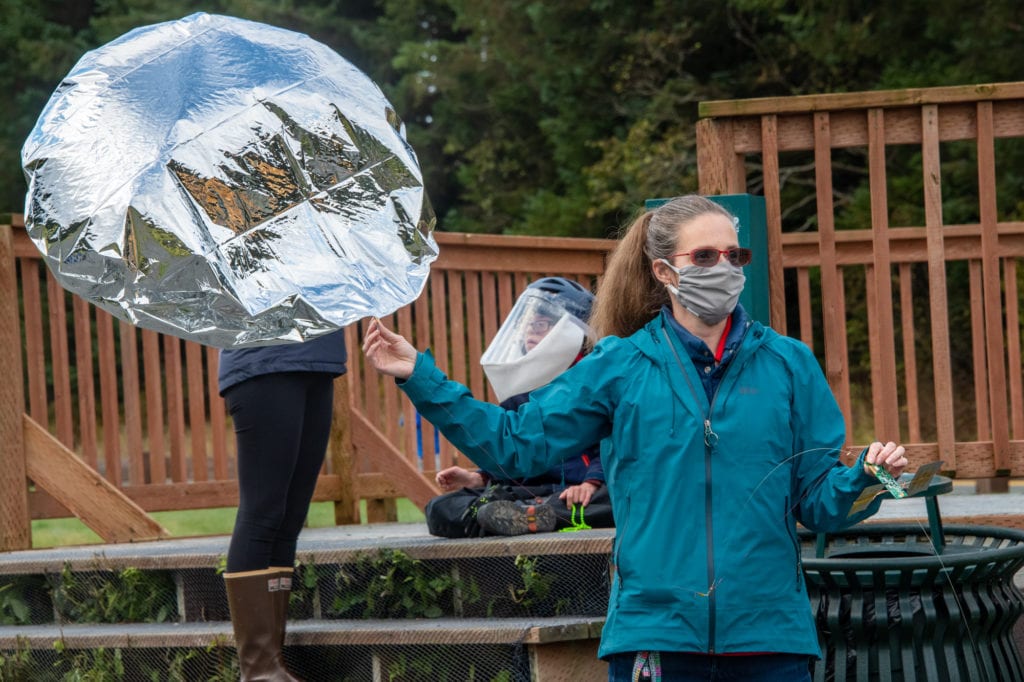
Friday, Oct. 9, Mt. Eccles Elementary School students helped launch a helium-filled balloon equipped with a transmitter. It was hoped that observers would be able to track the balloon’s movement for the coming two weeks as it followed atmospheric currents. However, the balloon has yet to appear on satellite screens, and may have been carried too far north to be easily tracked.
The public can check the balloon’s status by visiting aprs.fi and entering callsign KL4DL-1. Balloons launched across the U.S. can be tracked by visiting bit.ly/NASMBalloonsLive.
Mt. Eccles was one of several schools participating in the Smithsonian National Air and Space Museum’s Live Balloon Launch Across America event. The Mt. Eccles project was funded by the museum and by the Smithsonian’s Teacher Innovator Institute, of which Krysta Williams, a Mt. Eccles sixth grade teacher, is a member.
Preparing for the balloon launch gave students an opportunity to learn about physics concepts like buoyancy and density, Williams said. The balloon, which contained a solution of about 80 percent helium, had to exert just a few grams of lift in order to ascend into the air without going so high that it would be at risk of bursting.
However, just a week after severe winds toppled trees and threatened to pull roofs off buildings, weather conditions in Cordova were difficult for a balloon launch. The launch, initially scheduled for 9 a.m. Oct. 9 at Hollis Henrichs Park, was pushed back to the afternoon after forecasts predicted rain and wind. When released, the balloon, instead of rising straight upward, followed a diagonal ascent in the direction of Prince William Sound. Additionally, overcast skies may have delayed the balloon’s solar-powered transmitter from charging.

“I don’t know for sure whether ours is already in the ocean, whether it’s floating up there somewhere, too far away for signals to be tracked yet,” Williams said. “Because we’re starting so far north, and because of the direction that the currents tend to go, it’s entirely possible that ours could end up drifting over the Arctic Circle, where there just aren’t a lot of radio towers picking up signals, or where there aren’t necessarily a lot of satellites pinging… But it’s entirely possible that if ours did reach a high enough altitude, it may end up showing up on the tracking websites next week.”
Regardless, the project offered students an opportunity for hands-on learning about physics, Williams said. Williams hopes to do the project again, possibly with a greater focus on atmosphere science. Even without outside funding, the project could be accomplished for around $300, most of that accounting for the cost of the solar-powered transmitter, Williams said.
“If it shows back up, we’ll celebrate and everybody will be excited,” Williams said. “If it doesn’t, it was still fun to watch the balloon sail away.”





